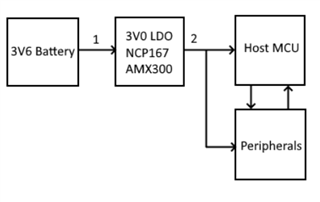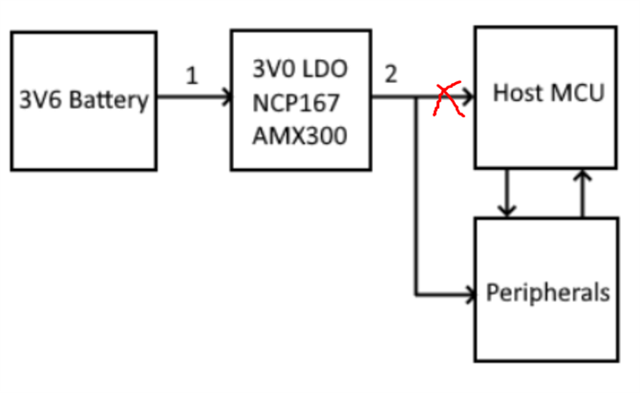Other Parts Discussed in Thread: INA238
Hi Experts,
Our customer has an IoT device whose system is briefly outlined in the image attached. When in low power mode, said microcontroller draws around 22uA. To ensure this mode they would like to monitor the current at either Position 1 or Position 2 (he doesn't think that before or after the LDO should make a big difference since it's linear). What solutions would you have in this case, please? Said solution needs to communicate the current draw with their Host MCU through an ADC/Digital Interface such as I2C etc.

I am not sure if this is the right forum for this concern but I would appreciate your advice and/or if you could move this to the forum that best handles this concern if needed. Thank you.
Best regards,
Gerald


